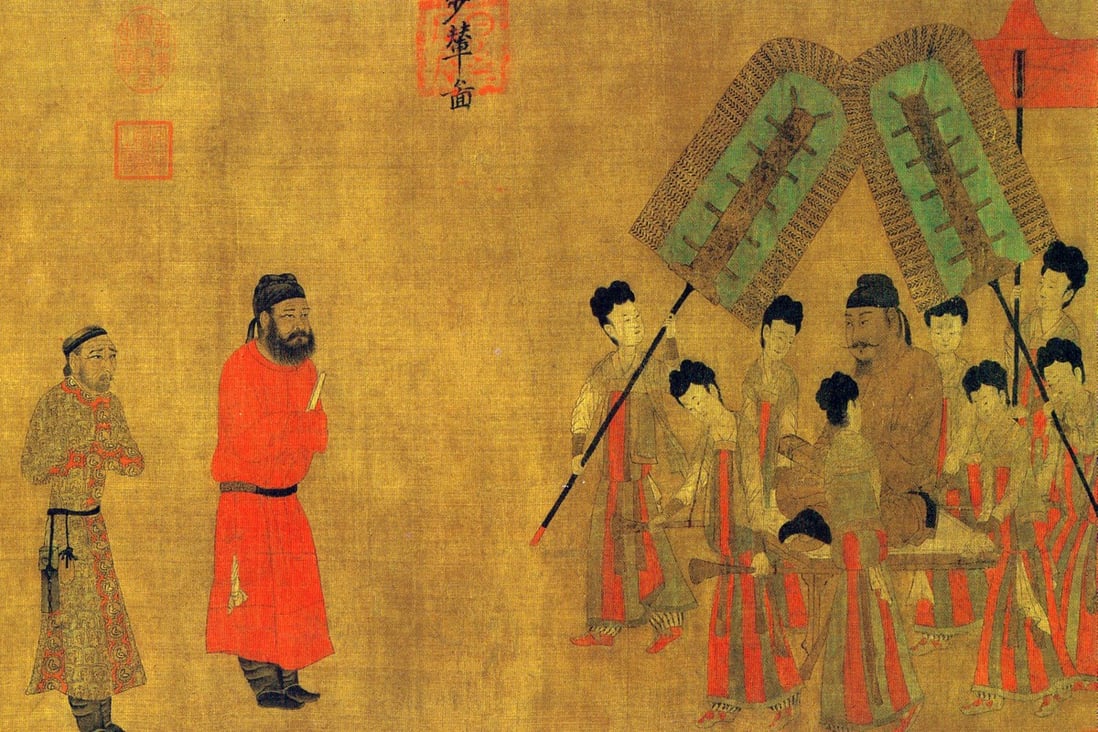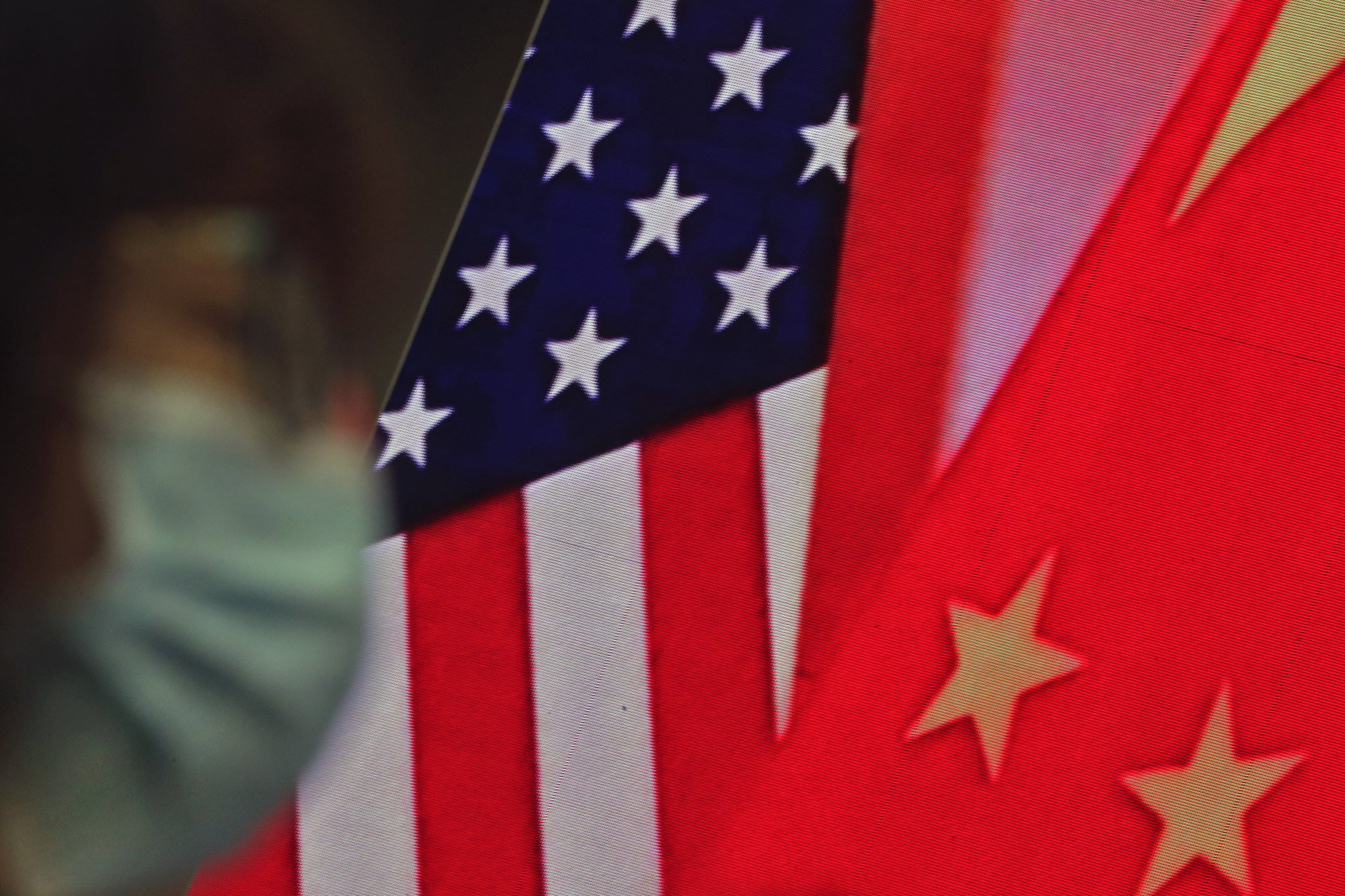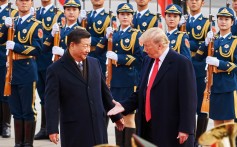Daryl Guppy
Why Joe Biden’s China policy team should look to the Tang dynasty, not European history

Daryl Guppy
Published: 3:30am, 3 Mar, 2021
Why you can trust SCMP
21
2


A painting shows Emperor Taizong, second emperor of the Tang dynasty, receiving the Tibetan envoy. Tang diplomats recognised that “virtue” and “righteousness” were not abstract principles, but rather a pragmatic view of how countries pursue their own interests and those they share with others. Photo: Universal History Archive/Getty Images
US President
Joe Biden
’s
opening moves
in China diplomacy risk repeating his predecessor Donald Trump’s errors because the misunderstanding of China’s situation remains similar.
China shares 14 land borders with other countries, and none can be characterised as China’s allies. To the east is the
unstable regime
of North Korea, which presents a management problem for the rest of the world, not just China. Although often characterised as a friend of China, North Korea is treated with concern and caution.
To the west is the border
with India
. Once the playground of the Great Game between Russia and Britain, this area remains a low-level problem. Borders to the northwest and northeast at times remain problematical and present their own problems with
militant Islam
.
The southwest borders with Vietnam, Laos and Cambodia remain porous because of heavy jungle and mountainous terrain. Although they pose no military threat, there is a real sense of lurking lawlessness and smuggling. The 2016 film
Operation Mekong
has its basis in this on-the-ground reality.


06:24
Explained: the history of China’s territorial disputes
Explained: the history of China’s territorial disputes
Looking seaward, the border issue is made more complicated with
overlapping territorial claims
and the active involvement of the United States.
So how to respond to this complex and potentially unstable environment?
Advertisement
Western analysts reach back into European history for solutions. They examine the reaction of European states that were similarly bounded by multiple borders. They make the assumption that China will behave in the same way as Europeans have in the past.
EVERY SATURDAY
SCMP Global Impact Newsletter
SIGN UP NOW
By registering, you agree to our T&C and Privacy Policy
This analysis draws on Clausewitz’s dictum that war is politics by other means. The analysis acknowledges Otto von Bismarck’s 1862 “blood and iron” speech that unified Germany against enemies around its borders and Klemens von Metternich’s 1815 model of diplomacy at the Congress of Vienna.
Reaching further back into European history, Western analysts speak of the “
Thucydides trap
”. This refers to the rivalry between ancient Greek city states where rising powers replaced old ones. While intriguing, the concept offers little in understanding of how China approaches these problems.

A woman wearing a face mask sits near a screen showing the Chinese and US flags as she listens to a speech by Chinese Foreign Minister Wang Yi at the Ministry of Foreign Affairs office in Beijing on February 22. A much-touted prism through which US-China relations are viewed today is the Thucydides trap. Photo: AP
A better place to start understanding the current Chinese approach is the diplomatic model of the Tang dynasty, which was part of a
golden age
of prosperity for China and its neighbours. Just like much of Europe’s history, this was a time when no single power was able to dominate a region.
https://www.scmp.com/week-asia/poli...d-mystery-kashmir-ceasefire-between-india-and
The Tang approach to diplomacy was based on the need to recognise mutual interests as well as self-interests in determining policies. The result was encapsulated in the Tang capital Chang’an, now Xian, and it favoured openness to trade, ideas and peace. Chang’an was famous for its religious tolerance, culture, arts and learning. It was a bazaar of ideas and cross-cultural influences, which are still felt today in Xian’s
food and markets
.
Chinese emperors needed critics, just as world leaders do today
29 Aug 2018

Tang diplomats recognised that “virtue” and “righteousness” were not abstract principles, but rather a pragmatic view of how countries pursue their own interests and those they share with others. Respect was viewed as one of the powers to be deployed in such relationships.
Advertisement
This Tang diplomatic imperative remains at the heart of China’s current approach to diplomacy. It underpins the implementation of the
Belt and Road Initiative
. It recognises that poverty is always a threat to stability and security.


02:35
Belt and Road Initiative explained
Belt and Road Initiative explained
Viewed through this historical lens, it explains China’s involvement in the
Regional Comprehensive Economic Partnership
and
its desire
to be part of the Comprehensive and Progressive Trans-Pacific Partnership Agreement. These multilateral platforms recognise mutual interests and seek to work with areas of common interest rather than exacerbating areas of difference. It is a model of international engagement and border security that China favours.
Advertisement
This historical lens also explains China’s
reactions
to countries that disrespect it. Respect does not mean subservience. Respect is an acknowledgement of the reality of power relationships and achievements. Respect means not
vilifying your best customer
, which is a path that Australia seems to have chosen.
Tang diplomacy was remarkably successful in maintaining peace over three centuries. Western diplomatic achievements are based on managing conflict in the everlasting bloody wars that have dominated Europe, where peace is the exception rather than the rule.
Why Joe Biden’s China policy team should look to the Tang dynasty, not European history
- When assessing how best to work with China, countries would be better served by historical analogies from Asia than those drawn from European traditions

Daryl Guppy
Published: 3:30am, 3 Mar, 2021
Why you can trust SCMP
21
2


A painting shows Emperor Taizong, second emperor of the Tang dynasty, receiving the Tibetan envoy. Tang diplomats recognised that “virtue” and “righteousness” were not abstract principles, but rather a pragmatic view of how countries pursue their own interests and those they share with others. Photo: Universal History Archive/Getty Images
US President
Joe Biden
’s
opening moves
in China diplomacy risk repeating his predecessor Donald Trump’s errors because the misunderstanding of China’s situation remains similar.
China shares 14 land borders with other countries, and none can be characterised as China’s allies. To the east is the
unstable regime
of North Korea, which presents a management problem for the rest of the world, not just China. Although often characterised as a friend of China, North Korea is treated with concern and caution.
To the west is the border
with India
. Once the playground of the Great Game between Russia and Britain, this area remains a low-level problem. Borders to the northwest and northeast at times remain problematical and present their own problems with
militant Islam
.
The southwest borders with Vietnam, Laos and Cambodia remain porous because of heavy jungle and mountainous terrain. Although they pose no military threat, there is a real sense of lurking lawlessness and smuggling. The 2016 film
Operation Mekong
has its basis in this on-the-ground reality.


06:24
Explained: the history of China’s territorial disputes
Explained: the history of China’s territorial disputes
Looking seaward, the border issue is made more complicated with
overlapping territorial claims
and the active involvement of the United States.
So how to respond to this complex and potentially unstable environment?
Advertisement
Western analysts reach back into European history for solutions. They examine the reaction of European states that were similarly bounded by multiple borders. They make the assumption that China will behave in the same way as Europeans have in the past.
EVERY SATURDAY
SCMP Global Impact Newsletter
SIGN UP NOW
By registering, you agree to our T&C and Privacy Policy
This analysis draws on Clausewitz’s dictum that war is politics by other means. The analysis acknowledges Otto von Bismarck’s 1862 “blood and iron” speech that unified Germany against enemies around its borders and Klemens von Metternich’s 1815 model of diplomacy at the Congress of Vienna.
Reaching further back into European history, Western analysts speak of the “
Thucydides trap
”. This refers to the rivalry between ancient Greek city states where rising powers replaced old ones. While intriguing, the concept offers little in understanding of how China approaches these problems.

A woman wearing a face mask sits near a screen showing the Chinese and US flags as she listens to a speech by Chinese Foreign Minister Wang Yi at the Ministry of Foreign Affairs office in Beijing on February 22. A much-touted prism through which US-China relations are viewed today is the Thucydides trap. Photo: AP
A better place to start understanding the current Chinese approach is the diplomatic model of the Tang dynasty, which was part of a
golden age
of prosperity for China and its neighbours. Just like much of Europe’s history, this was a time when no single power was able to dominate a region.
https://www.scmp.com/week-asia/poli...d-mystery-kashmir-ceasefire-between-india-and
The Tang approach to diplomacy was based on the need to recognise mutual interests as well as self-interests in determining policies. The result was encapsulated in the Tang capital Chang’an, now Xian, and it favoured openness to trade, ideas and peace. Chang’an was famous for its religious tolerance, culture, arts and learning. It was a bazaar of ideas and cross-cultural influences, which are still felt today in Xian’s
food and markets
.
Chinese emperors needed critics, just as world leaders do today
29 Aug 2018

Tang diplomats recognised that “virtue” and “righteousness” were not abstract principles, but rather a pragmatic view of how countries pursue their own interests and those they share with others. Respect was viewed as one of the powers to be deployed in such relationships.
Advertisement
This Tang diplomatic imperative remains at the heart of China’s current approach to diplomacy. It underpins the implementation of the
Belt and Road Initiative
. It recognises that poverty is always a threat to stability and security.


02:35
Belt and Road Initiative explained
Belt and Road Initiative explained
Viewed through this historical lens, it explains China’s involvement in the
Regional Comprehensive Economic Partnership
and
its desire
to be part of the Comprehensive and Progressive Trans-Pacific Partnership Agreement. These multilateral platforms recognise mutual interests and seek to work with areas of common interest rather than exacerbating areas of difference. It is a model of international engagement and border security that China favours.
Advertisement
This historical lens also explains China’s
reactions
to countries that disrespect it. Respect does not mean subservience. Respect is an acknowledgement of the reality of power relationships and achievements. Respect means not
vilifying your best customer
, which is a path that Australia seems to have chosen.
Tang diplomacy was remarkably successful in maintaining peace over three centuries. Western diplomatic achievements are based on managing conflict in the everlasting bloody wars that have dominated Europe, where peace is the exception rather than the rule.
